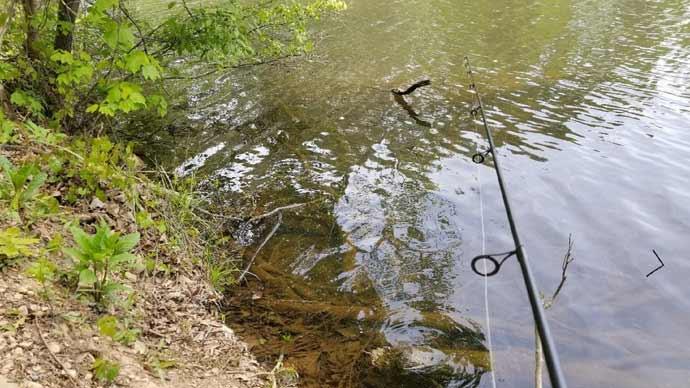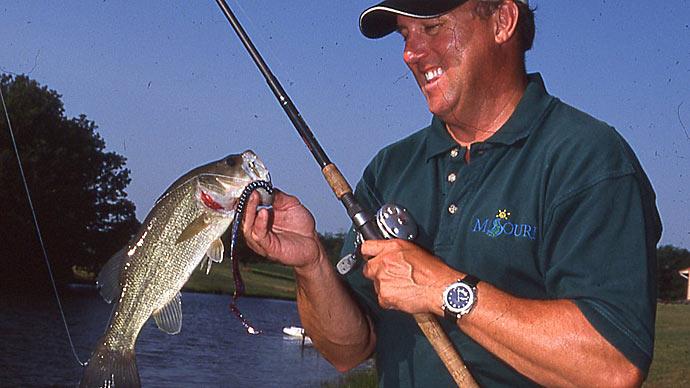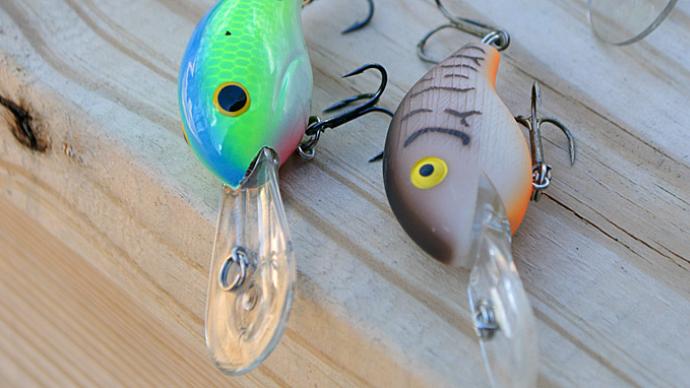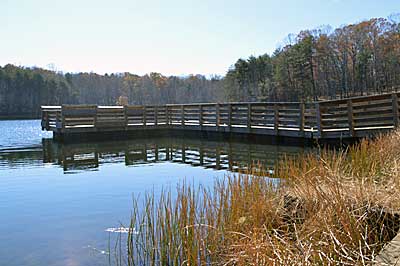
Fishing from shore can be a tough go. Where you can fish is determined by how far you’re willing to walk and where you have permission.
While an entire pond may be easily accessible, options can be limited on larger bodies of water. Private property gobbles up large chunks of shoreline, and natural features, such as bluffs and wetlands, make other stretches inaccessible. Reaching portions of rivers and streams, which often flow through private property, can be challenging, too.
The availability of easy access concentrates anglers in the same stretches. But you don’t have to join the crowd. There are ways to set off on your own and expand your fishing options, improving your chances of catching more and bigger bass in the process. All you need is an internet connection and some research time.
-
Online aerial photos
Technology is a wonderful thing. And one of its offerings that’s used often but credited seldom is satellite or aerial photos such as Google Earth. Not only do they provide a better idea of which roads to take to your fishing hole, but they also provide a snapshot of bodies of water. It’s easy to make out shallow and deep water stretches, especially if the water is clear. And you can uncover backwaters that you might’ve otherwise never known existed. Most are updated at regular intervals, allowing you to scroll into the past to see how things change year to year and season to season.
Maybe the best information these photos provide for shore anglers is where to find access. And there’s usually plenty if you look. Bridge crossings, for example, are often the easiest to find and reach. But there are others, including tracts of public land that abut a lake, river, or reservoir. They could be a small county, town, or village park, whose primary purpose may be something other than fishing. Even stretches of road that follow a body of water can provide access if you don’t mind scrambling over rip-rap.
-
Public land
The federal government and states own tracts of land. These public property pieces, including forests and grasslands, are promoted for various activities. Hiking, mountain biking, and hunting are top of the list. And while fishing usually follows further down, it’s available if there’s water.
These lands are home to a variety of waters. They are most often ponds or small streams. But some abut large lakes, rivers, and reservoirs. Chances are good they are home to smallmouth or largemouth, especially if the water is slow-moving or still. These lands are marked on online aerial photos. And once you have their names, a simple internet search will provide detailed maps of trails, roads, and fishing spots, along with rules and regulations.
Access roads and trails can be limited on public land, so be prepared with a map, GPS, and compass as a backup, if you head off a beaten path. And respect the potential for conflicts with other users. If you have to hike to a spot, ensure you aren’t disrupting a hunt, such as deer in the fall or turkey in the spring, or making yourself appear like something to shoot in the process. Stick to trails as much as possible and wear brightly colored clothing. If your dog is your fishing pal, keep it on a short leash.
-
Public fishing rights
Public fishing rights, where they’re available, grant access to private land at the discretion of its owner. This permission is often only for fishing, and it’s restricted to narrow stretches of land that follow bodies of water, most often small rivers and creeks.
Image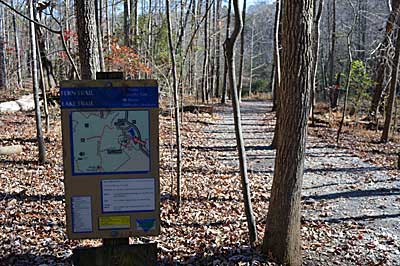
Accessing less pressured bank fishing spots requires effort. A walk, hike, or even mountain bike ride along a greenway can open doors to better fishing. Photo by Pete M. Anderson PFR use is managed by state fisheries agencies. They offer online maps of them. Those outline boundaries and list amenities such as parking and access trails.
Don’t confuse PFRs with a property that’s posted as no trespassing. Access to that requires the landowner’s permission. Getting that can be as easy as knocking on their front door and requesting it during a polite conversation. If that ends in a yes, then you’re all set. If it ends with a no, respect their decision and find a different fishing spot.
Take care of whether your fishing spot is PFR or posted with permission. Park your vehicle in a designated or safe place out of traffic, including landowner access. Pack out everything that you pack in, down to the smallest piece of trash. Pick up any litter that you may come across. These permissions are easily revoked. So, it’s the responsibility of all anglers who use them to ensure they remain open.
-
Fishing piers
Fishing piers are primarily associated with saltwater fishing. Many coastal towns have them, giving anglers the chance to fish away from shore and access slightly deeper water. Most charge a fee to fish. But they also are found on many inland waters, even small ponds. Access to these is almost always free, and they can be a great place to fish.
No fishing pier will ever be considered a secret spot. They’re easily found with an internet search, and most wildlife agencies list them with their public fishing access sites. So, they attract plenty of attention, from sight-seers to serious anglers. You’ll need to pack plenty of patience to overcome the fishing pressure. And you’ll need a plan of attack.
Don’t walk straight onto a pier and start casting toward deep water. You may bypass bass. Instead, stand back and fish the pier, placing casts next to pilings and under walkways and decking. This is an exceptionally productive approach if you’re fishing the pier first thing in the morning when bass that slide shallow overnight haven’t been spooked by people or retreated to deeper water with the rising sun.
Image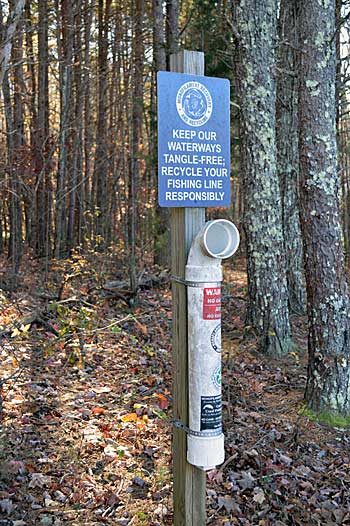
Shoreline fishing access comes with responsibility, especially when granted by private landowners. Ensure it remains open by taking care of it. Pack out everything you pack in, pick up any litter you find and place used fishing line in recycling receptacles when available. Photo by Pete M. Anderson Once you’ve fished your way around the pier, quietly step on it. Cast parallel to the bank on either side, searching for isolated cover or a drop-off. Look for nearby fish habitat, which is sunken and often marked with a buoy. While it receives most of a pier’s fishing pressure, a quickly retrieved crankbait, vibrating jig, or topwater has a good chance of sparking a reaction strike.
-
Parks
Water is usually a prominent feature of parks of all sizes. Some are built on the shores of large lakes, reservoirs, and rivers. Others have ponds or streams. While kayaking or swimming may be promoted loudly, fishing, while permitted, isn’t always. And that’s a good thing if you’re looking for a new secret spot.
National and state parks are usually the largest. They often offer access for kayaks, boats, and rentals. But don’t count out greenways and small county and town parks. Their size means they don’t ping on many anglers’ radar. And less fishing pressure by them means more catching for you.
You may have to walk, hike, or even mountain bike to reach these fishing spots, so pack your gear accordingly. Organize your lures in small utility boxes. Instead of bringing every crankbait, you own, for example, pick a couple of colors in different diving depths. Place those boxes and bags of soft-plastic lures in a small backpack. Grab a spinning and a casting rod, and you’ll be ready to fish whatever you come across.
Be sure to double-check each park’s regulations during your online search. Some charge an access fee; others require a fishing permit and a fishing license. Access may be restricted to certain hours, between when entrance gates are opened and closed. And be courteous to other users. Skip a spot if it’s occupied, share your fishing knowledge with those who ask, and leave the park nicer than you found.


